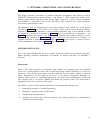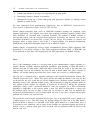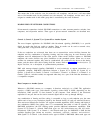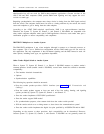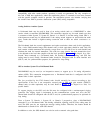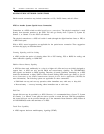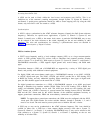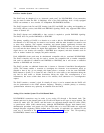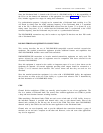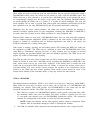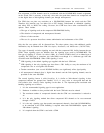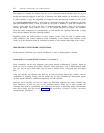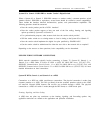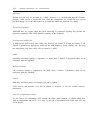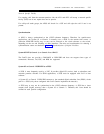
2-8
NETWORK CONNECTIONS AND CONFIGURATIONS
DACS to Another System
The DACS may be thought of as an “electronic patch panel” for DS1/DMI-BOS. Cross-connections
may be made at either the DS1 (1.544M-bps) level or the DS0 (64K-bps) level. A fully equipped
DACS can terminate or cross connect 127 independent DS1/DMI-BOS facilities.
The DACS supports both D4 and ESF framing, both ZCS and B8ZS line coding, and depending on
the DACS software version, both RBS and DMI-BOS signaling. DACS only supported RBS before
release of Generic 8.2.
The DACS digroup card (AMM180B or later version) is required to provide DMI-BOS signaling.
The DACS does not provide DMI-MOS or ISDN-PRI.
The primary capability of DACS is to function as a node or hub for DS1/DMI-BOS links. Some of
the channels on a DS1 link may be routed to one location, while the other channels are routed to one
or more other locations. This separate, recombine, and reroute feature significantly increases the
flexibility of DS1/DMI-BOS links. For example, a DS1/DMI using DMI-BOS may use some channels
for voice and the other channels for digital data applications. The DACS can route channels used for
digital data to one location (for example, a DMI-BOS host computer) and those channels used for
voice to another location (for example, the public network).
Each AMM180B circuit pack must be administered compatible with its associated DS1/DMI-BOS.
The DACS controller may not only be used to connect one compatible link to another compatible
link (such as robbed-bit to robbed-bit and DMI-BOS to DMI-BOS), but it will convert a robbed-bit
interface to DMI-BOS and vice-versa.
The DACS provides an additional feature that is known as Customer Controllable Reconfiguration
(CCR). This feature enables a customer to reconfigure the electronic cross-connections based on
demand or time of day. As an example, this feature allows a customer to use the same DS1/DMI-
BOS (between a System 75 or System 85 and a DACS) for voice traffic to one destination during the
day and for data traffic to another destination during the night. The reconfiguration is not
instantaneous, but occurs within about three to five minutes, from submission of a reconfiguration
request.
The DACS contains a stratum-3 clock. In virtually all cases, it can be assumed that the DACS will
also be synchronized to the AT&T reference frequency. Therefore, a suitable primary or secondary
synchronization reference may optionally be obtained from the DACS.
Analog CO to Another System Via a D4-Channel Bank
DS1/DMI-BOS connections may be made to any analog CO through a D4-channel bank. The
channel units used in the channel bank at the CO end will depend on the type of service desired. The
switch CO trunks (CO, FX, WATS, and RA trunks) are supported through either FX office (FXO)
or special-access office (SAO) channel units. Although DS1/DMI-BOS supports both channel units,
administration procedures now permit only FXO channel units to be used. DID trunks are supported
through dial-pulse originating (DPO) channel units. Tie trunks (if applicable) are supported in the
same way as described in the Analog Switch to Another System section. The corresponding
DS1/DMI-BOS channels must be administered consistently at the switch end.




